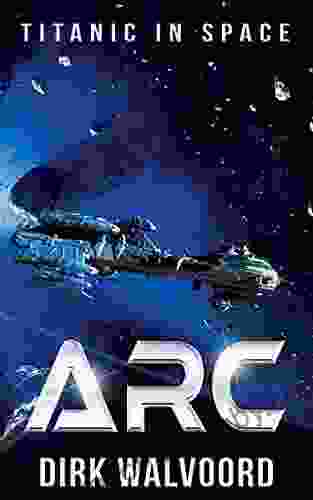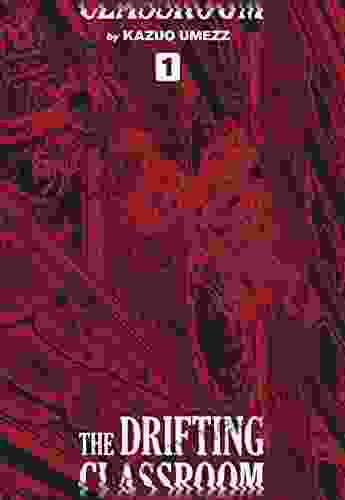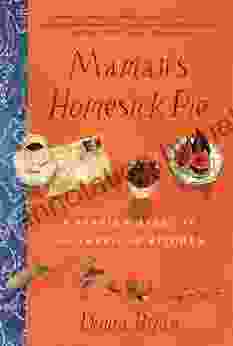Sincerity In Animation: A Journey Through the Art of Truthful Storytelling

In the realm of storytelling, there is no greater virtue than sincerity. When a storyteller opens their heart and bares their soul, they have the power to connect with their audience on a profound level, evoking emotions that resonate deep within.
5 out of 5
| Language | : | English |
| File size | : | 11526 KB |
| Text-to-Speech | : | Enabled |
| Enhanced typesetting | : | Enabled |
| Word Wise | : | Enabled |
| Screen Reader | : | Supported |
| Print length | : | 437 pages |
Animation, with its unique ability to bring the intangible to life, is a particularly potent medium for conveying sincerity. Through the movement of lines and the interplay of light and shadow, animators can create characters and worlds that feel authentic and emotionally alive.
In this article, we will explore the transformative power of sincerity in animation. We will trace the history of sincerity in the medium, examine its impact on audiences, and provide tips for animators who wish to craft more authentic and emotionally resonant stories.
A History of Sincerity in Animation
Sincerity has been a defining characteristic of animation since its earliest days. In the early 20th century, pioneers like Walt Disney and Ub Iwerks created characters that were instantly recognizable for their warmth and charm. These characters were not simply caricatures; they were imbued with a sense of humanity that made them relatable and endearing.
In the decades that followed, animators continued to explore the power of sincerity. In the 1950s, Disney released a series of animated films that dealt with complex and mature themes. These films, such as "Snow White and the Seven Dwarfs" and "Pinocchio," were not afraid to tackle issues of love, loss, and sacrifice. They were praised for their emotional depth and sincerity, and they continue to be enjoyed by audiences of all ages.
In the 1960s and 1970s, a new generation of animators emerged who pushed the boundaries of the medium. These animators, influenced by the counterculture movement, created films that were more experimental and personal. They used animation to explore their own fears, dreams, and desires. These films, such as "Fantastic Planet" and "Yellow Submarine," were often controversial, but they were also praised for their originality and sincerity.
In recent years, there has been a resurgence of interest in sincerity in animation. A new generation of animators is using the medium to tell stories that are both personal and universal. These stories often deal with difficult subjects, such as mental illness, addiction, and loss. They are praised for their honesty and sincerity, and they are helping to change the face of animation.
The Impact of Sincerity on Audiences
Sincerity has a profound impact on audiences. When an audience feels that a story is sincere, they are more likely to be emotionally invested in it. They are more likely to care about the characters and the journey they are on. They are more likely to be moved to tears or laughter. And they are more likely to remember the story long after they have seen it.
There are many reasons why sincerity has such a powerful impact on audiences. First, sincerity is disarming. When a storyteller opens their heart and bares their soul, it is difficult to resist their honesty. We are drawn to those who are willing to be vulnerable, and we are more likely to trust them.
Second, sincerity is relatable. When a story is sincere, it taps into our own emotions and experiences. We see ourselves in the characters and the struggles they face. We feel their pain, their joy, and their hope. This connection makes the story more meaningful and memorable.
Third, sincerity is inspiring. When we see someone who is willing to be honest and vulnerable, it inspires us to do the same. It shows us that it is possible to live an authentic life, even when it is difficult. It gives us hope that we can overcome our own challenges and achieve our dreams.
How to Craft More Sincere Stories
If you want to craft more sincere stories, there are a few things you can do. First, be honest with yourself. What are your own fears, dreams, and desires? What are the experiences that have shaped you as a person? Once you know what is important to you, you can start to write stories that resonate with your own emotions and experiences.
Second, be brave. Don't be afraid to tackle difficult subjects or to explore your own vulnerability. The more personal your story is, the more likely it is to connect with audiences on a deep level.
Third, be patient. Crafting a sincere story takes time and effort. Don't be discouraged if you don't get it right the first time. Keep working at it, and eventually, you will create a story that you can be proud of.
Sincerity is a powerful force in storytelling. When a storyteller opens their heart and bares their soul, they have the power to connect with their audience on a profound level. Animation, with its unique ability to bring the intangible to life, is a particularly potent medium for conveying sincerity. In the hands of skilled animators, sincerity can transform a story from something ordinary into something truly extraordinary.
If you want to create more sincere and emotionally resonant stories, be honest with yourself, be brave, and be patient. It takes time and effort, but the rewards are worth it.
5 out of 5
| Language | : | English |
| File size | : | 11526 KB |
| Text-to-Speech | : | Enabled |
| Enhanced typesetting | : | Enabled |
| Word Wise | : | Enabled |
| Screen Reader | : | Supported |
| Print length | : | 437 pages |
Do you want to contribute by writing guest posts on this blog?
Please contact us and send us a resume of previous articles that you have written.
 Book
Book Novel
Novel Page
Page Chapter
Chapter Text
Text Story
Story Genre
Genre Reader
Reader Library
Library Paperback
Paperback E-book
E-book Magazine
Magazine Newspaper
Newspaper Paragraph
Paragraph Sentence
Sentence Bookmark
Bookmark Shelf
Shelf Glossary
Glossary Bibliography
Bibliography Foreword
Foreword Preface
Preface Synopsis
Synopsis Annotation
Annotation Footnote
Footnote Manuscript
Manuscript Scroll
Scroll Codex
Codex Tome
Tome Bestseller
Bestseller Classics
Classics Library card
Library card Narrative
Narrative Biography
Biography Autobiography
Autobiography Memoir
Memoir Reference
Reference Encyclopedia
Encyclopedia Denise Van Outen
Denise Van Outen Susan Vande Griek
Susan Vande Griek Debra Meyerson
Debra Meyerson Deborah Voigt
Deborah Voigt Dick Crouser
Dick Crouser Diane Huber
Diane Huber Steven Selikoff
Steven Selikoff Demelza Carlton
Demelza Carlton Trevis L Gleason
Trevis L Gleason Deylin Hernandez
Deylin Hernandez Wendy Leighton Porter
Wendy Leighton Porter Mithu Sengupta
Mithu Sengupta Dennis S Ippolito
Dennis S Ippolito Kwasu David Tembo
Kwasu David Tembo Jonalu Johnstone
Jonalu Johnstone Diane Lane Chambers
Diane Lane Chambers Will Goldston
Will Goldston James C Scott
James C Scott Paul Bowles
Paul Bowles Lauren Markham
Lauren Markham
Light bulbAdvertise smarter! Our strategic ad space ensures maximum exposure. Reserve your spot today!

 Calvin FisherThe Long Black Coat: Unveiling the Enigmatic Garments of the Totalitarian Era
Calvin FisherThe Long Black Coat: Unveiling the Enigmatic Garments of the Totalitarian Era
 Walt WhitmanUnravel the Enigmatic Murders of "The Hobby Farm Murders": A Gripping True...
Walt WhitmanUnravel the Enigmatic Murders of "The Hobby Farm Murders": A Gripping True...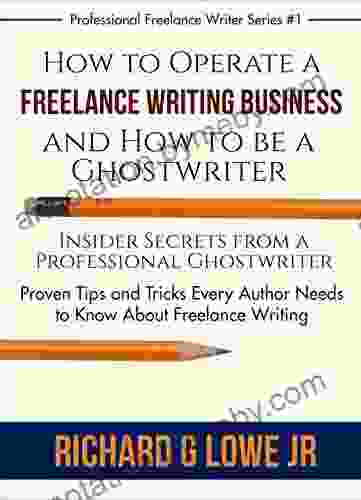
 John SteinbeckInsider Secrets from Professional Ghostwriters: Proven Tips and Tricks for...
John SteinbeckInsider Secrets from Professional Ghostwriters: Proven Tips and Tricks for... Matt ReedFollow ·13.9k
Matt ReedFollow ·13.9k Gary ReedFollow ·2k
Gary ReedFollow ·2k Brian WestFollow ·5.2k
Brian WestFollow ·5.2k Trevor BellFollow ·10k
Trevor BellFollow ·10k Rex HayesFollow ·7k
Rex HayesFollow ·7k Dwight BlairFollow ·18.9k
Dwight BlairFollow ·18.9k Troy SimmonsFollow ·17.4k
Troy SimmonsFollow ·17.4k Roger TurnerFollow ·3.3k
Roger TurnerFollow ·3.3k
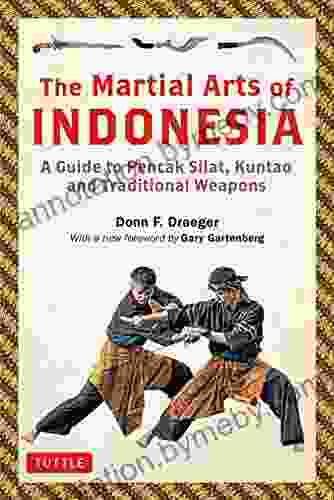
 Cruz Simmons
Cruz SimmonsGuide To Pencak Silat Kuntao And Traditional Weapons:...
Immerse yourself in the captivating world of...

 Dalton Foster
Dalton FosterUnlock Your Financial Freedom: Dive into the ABCs of Real...
Are you ready to embark on a...

 George Orwell
George OrwellThe Advanced Guide to Real Estate Investing: Your...
Are you ready to embark on...
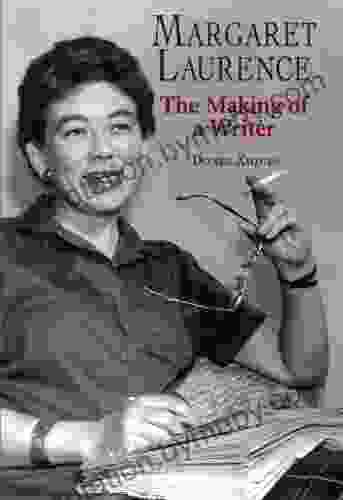
 Will Ward
Will WardMargaret Laurence: The Making of a Writer
Margaret Laurence (1926-1987) was one of...

 Jorge Amado
Jorge AmadoThe ABCs of Property Management: A Comprehensive Guide...
Owning and managing rental...
5 out of 5
| Language | : | English |
| File size | : | 11526 KB |
| Text-to-Speech | : | Enabled |
| Enhanced typesetting | : | Enabled |
| Word Wise | : | Enabled |
| Screen Reader | : | Supported |
| Print length | : | 437 pages |



